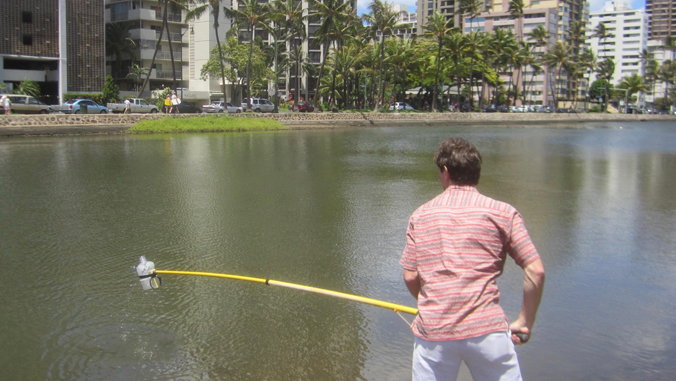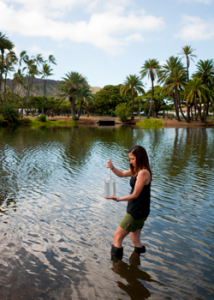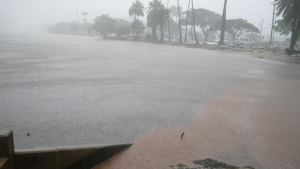
In the Ala Wai Canal in Waikīkī, the abundance of Vibrio vulnificus, an infectious bacterium, is strongly influenced by the amount of rainfall in the surrounding areas, according to a published study by oceanographers at the University of Hawaiʻi at Mānoa and Hawaiʻi Pacific University (HPU).
Study authors Olivia Nigro, a former graduate student in oceanography at UH Mānoa and now an assistant professor at HPU, and Grieg Steward, professor in the UH Mānoa School of Ocean and Earth Science and Technology, first assessed Vibrio in 2006, when an Oʻahu man died from a V. vulnificus infection after his cuts and scrapes were exposed to Ala Wai Harbor water.

"His exposure occurred after many days of heavy rainfall, which, given our results, suggests this may have been an exacerbating factor," said Steward. "At the time, we realized there was almost no data on the ecology of V. vulnificus in the canal, or in Hawaiʻi generally, and remarkably, very little in tropical waters anywhere."
After a quick pilot study in 2006 that showed the bacteria are present in high, but not unexpected numbers, the team geared up for a year-long study in 2008–09 with better methods to understand the variability in abundance over a seasonal cycle.
Hawaiʻi's unique dynamics
At higher latitudes, the abundance of V. vulnificus shows a very strong seasonal cycle—nearly disappearing in winter when temperatures are cold. In Hawaiʻi, temperatures are warm year-round, so freshwater input becomes a more important control.
"V. vulnificus occurs naturally in warm, brackish waters," said Nigro. "So we expect to find this bacterium anywhere that temperatures are warm and freshwater and seawater mix in about equal proportions. When conditions are right, the Ala Wai Canal can be a great incubator for this bacterium!"
The researchers observed that rainfall has a variable effect depending on the amount of precipitation.
"Too little rainfall means much of the canal is saltier than optimum for V. vulnificus growth, too much rainfall and the canal is fresher than the bacterium likes," said Nigro. "We also found that, because of the flushing effect of intense rainfall, the highest abundance of V. vulnificus shifted from within the canal out into the harbor."

They observed the highest canal-wide average abundances, among the highest recorded anywhere, during a time of modest rainfall, moderate salinities and a moderate flushing of the canal.
The researchers noted that, although rainfall is more frequent in winter on average, significant rainfall can also occur in summer, so spikes in V. vulnificus can be a problem any time of year. This makes it challenging to predict precisely when and where there will be high concentrations of this pathogen. However, based on a few variables—rainfall and resulting salinity and flushing of the canal—the relative risk of exposure to this pathogen could be predicted as an average for the system.
Reducing the risk of infection
With additional years of data to better understand how V. vulnificus varies in space and time, it may be possible to provide real-time predictions of when and where the bacterium is likely to be at unusually high concentrations, which is one component in assessing the risk of infection.
"Although V. vulnificus can cause serious or even lethal infections, it usually only becomes a problem for individuals with underlying medical issues," said Steward. "So people should not panic about incidental exposure to canal water. But it is wise to wash off with soap and water after exposure and one should avoid exposing open wounds to canal water, especially if one is immunocompromised."
This project was supported by funding from the National Oceanic and Atmospheric Administration through Hawaiʻi Sea Grant and from the National Science Foundation.
This work is an example of UH Mānoa's goal of Excellence in Research: Advancing the Research and Creative Work Enterprise (PDF), one of four goals identified in the 2015–25 Strategic Plan (PDF), updated in December 2020.






